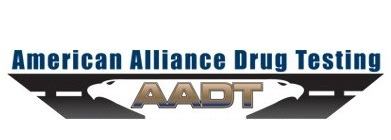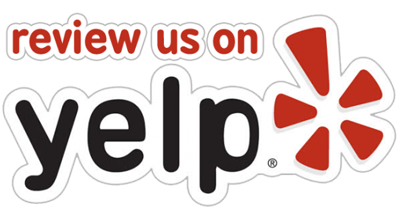Commercial Driver’s License Drug and Alcohol Clearinghouse
/in News /by adminFederal Motor Carrier Safety Administration
Read more
Trucking Alliance calls for Congress to require truck driver applicants to be drug tested via hair sample
/in News /by adminThe Trucking Alliance, a coalition of some of the country’s largest trucking companies, is pressing Congress to require applicants for truck driving jobs to be screened for drug use via hair sample test, rather than the current urine test requirement. Read more
DOT Drug Testing: After Jan 1, 2018 – Still a 5-Panel
/in News /by adminDOT 5 Panel Notice
Full notice available at https://www.transportation.gov/odapc/DOT_5_Panel_Notice_2018.
DOT Drug Testing: After January 1, 2018 – Still a 5-Panel Read more
Taking The High Road: Marijuana Tester For Drivers Taking Shape
/in News /by adminAs states across the country legalize marijuana use, either for medicinal or recreational purposes, a predictable outcome is that over time more drivers will get behind the wheel under its influence. However, as compared to drivers pulled over for suspicion of drinking and drunk driving, determining impairment from smoking is significantly harder to do.
Congressional reps ask FMCSA to move quickly in allowing carriers to drug test drivers via hair sample
/in News /by adminSeven members of the U.S. House of Representatives sent a letter late last month to the Federal Motor Carrier Safety Administration expressing their support for allowing a group of large carriers to begin drug testing drivers exclusively via hair sample — but only after the Department of Health and Human Services produces guidelines for such tests. Read more
DOT Creates CDL Drug and Alcohol Clearinghouse, Imposing Employer Reporting and Query Obligations
/in News /by adminDOT: Rules to establish drug/alcohol database, new driver training standards could be published this week
/in News /by adminRule to build database of truckers who have failed drug tests set for publication
/in News /by adminAlways use the motor carrier’s legal name when signing up with AADT
/in News /by adminWe’ve been contacted by some clients who went through a safety audit where the auditor refused to accept as proof of enrollment in a drug and alcohol consortium a certificate that did not accurately show the legal name of the motor carrier.
This issue is happening mostly with sole-proprietorships that are also using a fictitious business name or DBA (doing-business-as) that has not been legally registered with your county nor included in the motor carrier profile or authority issued by the state or federal government.
If you sign-up with AADT and tell us your carrier name for example is XYZ Trucking, we do not verify your carrier name through state or federal databases and your enrollment certificate will show the name you gave us.
If your federal or state operating authority (permit) only shows your personal name (e.g. John Smith), you can only use that name on the side of your truck and for registering for services such as drug and alcohol testing services. Using a fictitious business name or d/b/a is allowed, but you need to update your motor carrier profile within FMCSA’s SAFER system to show that additional name and/or notify the state which issued you a permit to include the fictitious name or d/b/a so it is added to your permit. You can then legally use either name to identify your business.
WARNING: Fixing a problem related to proper motor carrier identification WILL also mean you must notify your liability insurance carrier to submit update proof-of-insurance to either the state and/or feds. Operating authority/permits will be cancelled by states and the federal government if insurance on file does not exactly match the name of the motor carrier.
So, if you are a sole-proprietor (e.g. John Smith) and are legally using XYZ Trucking as a fictitious/d/b/a name for your business, your insurance certificate must reflect both of those names.
You don’t need to fail a safety audit and the good news is we here at AADT can help you fix this problem, often for a very nominal fee.
What’s the Difference Between Type 1 vs. Type 2 eCCF-approved Labs?
/in News /by adminNote: eCCF refers to “electronic Chain of Custody Forms”
With the recent HHS approval of various labs to implement an eCCF system for regulatory testing, there have been questions about what are Type 1 and Type 2 eCCFs. Below is a brief explanation:
Type 1: the collector uses an electronic CCF to document the collection process and then prints the CCF (Copies 1-5) without signatures. The collector, the donor, and the test facility personnel (e.g., accessioner, certifying technician, certifying scientist) sign the CCF using wet signatures. The electronic form is not signed.
Type 2: the collector uses an electronic CCF to document the collection process, the collector and donor sign using electronic signatures (the donor uses a digitized signature), and the collector prints Copy 1 with his/her electronic signature. This Copy 1 is the authoritative copy sent to the test facility with the specimen. The test facility personnel (e.g., accessioner, certifying technician, certifying scientist) sign the CCF using wet signatures.
Background:
HHS originally defined an electronic/paper Federal eCCF system in the HHS/NLCP Oversight and Requirements document on the SAMHSA website.
Subsequently, to enable the use of eCCF systems currently in place for non-regulated specimens (that were proposed for use with regulated specimens), HHS revised definitions to allow the 2 types of electronic/paper combination systems described above. See the June 23, 2015 National Laboratory Certification Program (NLCP) Notice. These 2 system types and requirements for their use are also defined in the NLCP Manual and addressed in other NLCP guidance (e.g., CCF Decision Trees).
SEARCH AADT
NEWS
- Change is Coming to How Users Access the DOT’s Drug and Alcohol Management Information System (MIS)December 13, 2023 - 4:37 pm
- Can truck drivers use CBD? All you need to know about cannabis, hemp, testing & the clearinghouseJanuary 5, 2023 - 2:59 pm
- FMCSA Clearinghouse: Updated User Brochures Now AvailableJuly 20, 2021 - 2:00 pm
CONTACT US
Monday - Friday
9AM-4PM (PST)
Office - 909/982-8409
Text - 909/533-9833
Corporate Headquarter334 North Euclid Avenue
Upland, CA 91786



